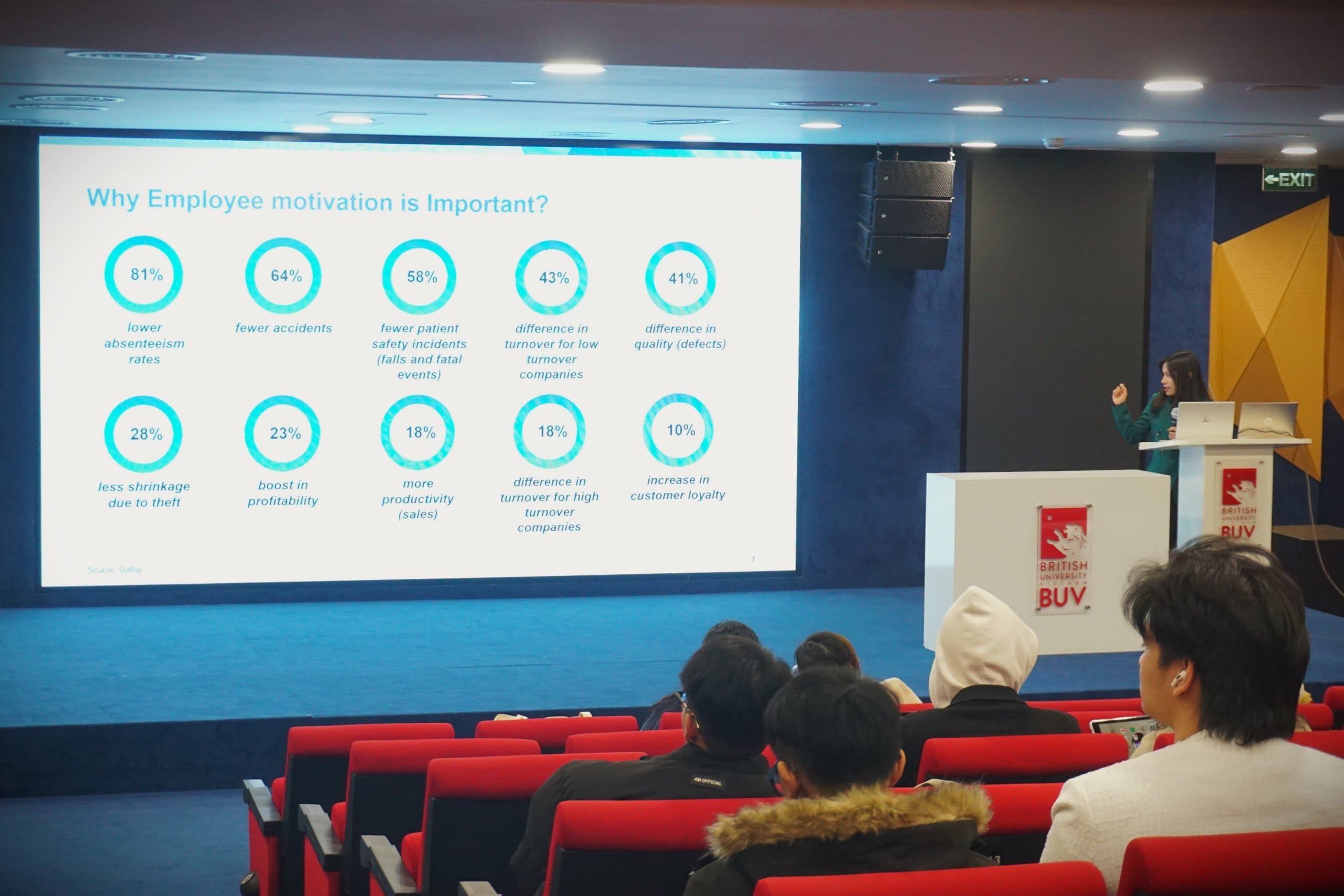Employee Motivation – the fuel for organizational success!
Steve Jobs, the late CEO of Apple, once said, "I'm convinced that about half of what separates the successful entrepreneurs from the non-successful ones is pure perseverance." This is also the secret for Apple employees to turn the company and its products into a symbol and global consumer trend.
Motivation for employees sometimes comes from just one word from the leader. Not only that, but there are many other ways that managers should know to turn their team into a super team.
What is Employee Motivation and why is it important?
Employee Motivation is the level of commitment, drive, and creativity that employees bring with them to work every day. Motivated workers go the extra mile to complete tasks, improving productivity and staying strongly engaged with the company.
Research has shown that high motivation also leads to better work performance and productivity, higher profit, a lower turnover rate, and a better employer reputation. This is a competitive advantage in the talent shortage era.
However, maintaining and enhancing employee motivation can be a challenge for business leaders as each employee is unique and has different needs and motivations.

How to improve Employee Motivation at work?
One of the first steps to improving employee motivation is to measure it. There are various tools and methods to assess the level of motivation of your employees to identify the strengths and weaknesses of your current practices and to set goals and action plans for improvement.
In a recent workshop on this topic at British University Vietnam (BUV), Ms. Vu Thu Van, Manager of Staffing & Outsourcing Service Delivery at ManpowerGroup Vietnam revealed surprising figures about the importance of employee motivation to HR management.
Besides the labor cost (i.e., wages, benefits, and recruitment expenses) that employers must spend on every worker, there are also hidden costs (like training, safety, and compliance) and opportunity costs (such as missed production).
This means that for every worker that a company loses due to any reason, including poor employee motivation, they will lose 1.5 times the original labor cost spent.
To keep employees motivated and engaged, ManpowerGroup expert suggests that employers focus on key elements including professional growth and development, workplace culture and environment, physical and mental wellbeing, as well as rewards, recognition, & feedback. It’s worth noting that there is no single approach that works for everyone. So, be flexible and creative.

Best practices and Tips to motivate your employees
Dell Inc., an American technology company that develops and sells computers and related products and services, is a great example of developing flexible working to promote employee engagement. In the first place, Dell’s flexible working program had no specific structure, which made it hard for its employees to know if such a “perk” is for them vs. to others.
To solve this matter, Dell invested time and energy into ensuring employees had the support and tools to successfully work flexibly. In addition to providing the right technology and collaboration tools, Dell also ensured there was a clear evaluation framework that held all workers to the same standard. The result was satisfying for both the company and staff. Dell mitigated the perception of two tiers of workers with different evaluation criteria while all the employees were clear and happy with the new scheme.
Noticeably, while there are some similarities, male and female workers have different motivators at work, as reported in What Workers Want To Thrive Research by ManpowerGroup. For example, there are more women than men who desire flexibility about working hours (49% versus 42%, respectively).
This is an important insight when considering the forecast that the present- and future-workforce will be female-fueled. Meanwhile, male workers generally pay greater attention to career coaching and development than their counterparts (25% and 18%, respectively). Therefore, it is important for employers to understand and address the different needs and preferences of male and female workers, and to provide them with the appropriate motivation and engagement strategies.
While it is the responsibility of the organization to continually improve and maintain employee motivation, it’s also necessary for workers to raise their fuel and energy. Ms. Van emphasizes the importance of self-learning and upskilling. “When joining training courses at work, don’t hesitate to ask questions, whether you are an entry-level worker or a senior. Asking is one of the best ways to get the most out of your learning experience. Furthermore, take extra courses on topics related to your job. Actively investing in your professional growth will make you more confident and competent in your role, which leads to a higher level of work motivation.”
In conclusion, employee motivation is more than a task, it’s a fundamental focus on management and people. Companies that take employee motivation seriously and invest wisely will have a competitive advantage in the dynamic business landscape.
Thank you for reading, and stay tuned for more posts on organizational management and leadership!



